Pedigree of a dog: how to make and read?

If a person starts a dog as not only a pet, but also a future participant in exhibitions or for mating, he cannot do without a pedigree. The preparation of this document is not a particularly difficult task.
What is a pedigree for?
A pedigree can be made for a dog that meets several important criteria. Her parents must be thoroughbred, and the dog itself must fully comply with standards and not have any defects. In other words, pedigree is an indicator that the puppy belongs to a pure breed without any impurities.
However, this document does not guarantee that the animal will have the good temperament, training sensitivity or mental characteristics required for employment in certain services.
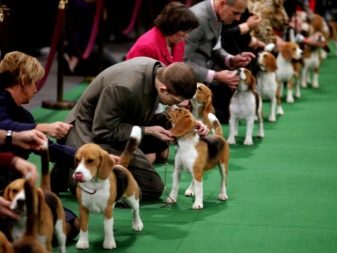

If you get a purebred dog with a pedigree, you will be able to get access to mating, permission to participate in exhibitions, registration in the club and other benefits. Since the document is a guarantee of compliance with breed standards and puppy purebredness, this makes it possible to significantly increase its value. For breeders, this fact is certainly an advantage. In general, the higher the rank of the parents, the more expensive their puppies are considered.
By the way, many people confuse the pedigree document. with veterinary passport, which is issued to any dog in any veterinary clinic. Despite the words in the title "international" and "passport", the paper does not contain any information about compliance with standards and ancestors. It contains only data on the health of the animal, vaccinations, treatments against parasites and other similar measures.
In the same veterinary clinic, Chipping Registration Certificate, but again this is not about pedigree. The chip is a miniature microcircuit inserted under the skin of the animal, thanks to which you can quickly find out information about the dog and its owner.
In general, pedigree is necessary either for business or to satisfy the ambitions of the owner. An ordinary pet does not need special papers with stamps and confirmation, since they do not even affect a visit to a veterinarian or a flight abroad. But you can't do without a veterinary passport - it will be required even for mongrels found on the street.
The same applies to buying a dog: if the owner does not have a pedigree, it does not mean at all that he is deceiving the buyer, perhaps he simply was not puzzled at the time by paperwork. But a veterinary passport is required, because it at least guarantees the availability of vaccinations and no danger to people and other animals.
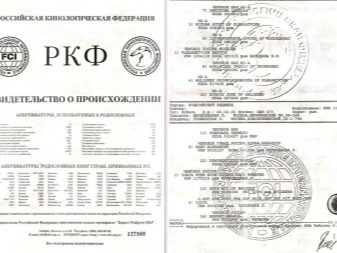

At what age to do?
To issue a pedigree to a dog, puppies first need to obtain a birth certificate. In this document, in addition to the fact of the birth itself, data will be indicated that the mating of the parents was carried out in accordance with the rules.
It is important to have time to issue a primary metric from the moment the puppy turns 45 days old until the moment the puppy is three months old. In most cases, this metric is obtained along with the activation of the litter in the kennel club where the mother of the puppy is. Further, the birth certificate will be exchanged for a pedigree, which can be issued after the dog reaches 6 months.
The main thing is to have time with the papers until the dog turns 15 months old and he does not move from juniors to the category of adults. Paperwork takes from 3 to 4 months.
The club deals with the primary metrics of the dog, and the pedigree itself is drawn up through the RKF or SCOR.
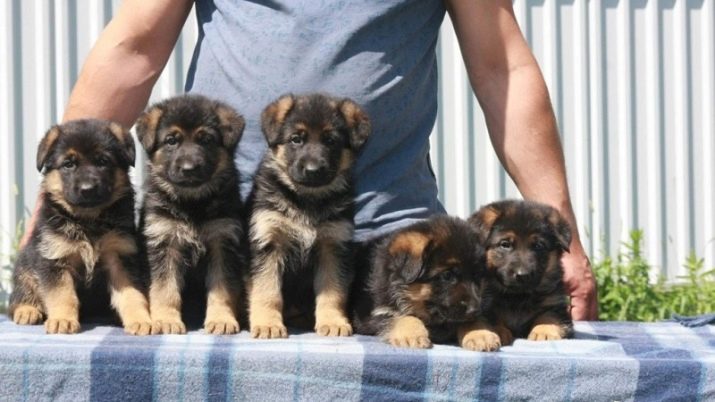
Groups
Experts distinguish three main groups of pedigrees. These types differ mainly in the amount of information contained.
- Group A combines pedigrees of the full type. Such documents contain information about the dog's ancestors for 5 previous generations.
- Group B implies entering information into the document only about the parents of the puppy.
- Finally, in the lineages of group C, which are often called registry ones, they contain information only about the dog itself - nickname, breed and full name. owner.
Undoubtedly, the more serious the plans for the dog, the higher the pedigree category should be. If information about one of the ancestors is absent, then the pedigree of group A is considered incomplete. In principle, the same applies to group B.


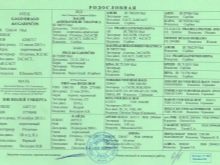
What documents do I need to provide?
To issue a pedigree for a dog in Russia, as already mentioned, you first need to start getting puppy card. The information model contains all the features of a particular specimen and even its shortcomings that affect the breeding value of the dog. Usually, the document must indicate the breed and nickname, gender and date of birth, as well as the suit and number of the stamp.
The available information about the parents of the animal, as well as the full name, passport details and contact information of the owner are entered there immediately. This document is further recognized as valid and used for exchange only with the seal and signature of the organization that issued it.
Part of the primary metric is sent to storage in Russian Cynological Federation, and the other remains with the owner. It is important to preserve it even after obtaining the pedigree., since in case of loss of the main document, in most cases, restoration is possible only with this certificate. Although sometimes when contacting the club, employees will issue a repeated birth certificate, based on the mark applied to the dog's ear or belly. The puppy metric expires when the puppy is one year and three months old.
Some owners are worried about whether it will be possible to issue a pedigree if the primary document is absent. In this case, you will receive only registration or zero paper. Although she confirms the breed of the puppy, she does not give him the opportunity to take part in international exhibitions and be used for mating. A zero pedigree is issued only if the commission confirms that the dog meets the breed standards.
By the way, this name was given because of the "zero" - the lack of information in the line about the parents.

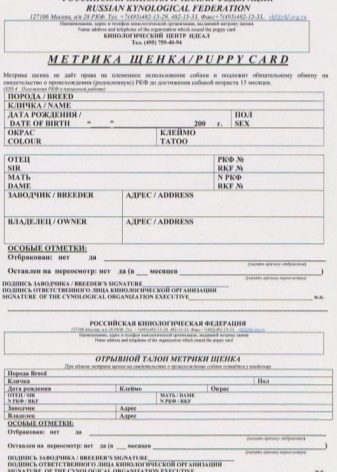
The registered pedigree is done at the club. A prerequisite is a preliminary examination of the dog by three experts certified for this breed. In addition to this information, you will need two photos - in profile and full face, again signed by an expert. If available, the original unconfirmed pedigree should also be added. When filling out the metric to obtain a pedigree, it is important to adhere to a simple rule - to do everything accurately and correctly, otherwise the organization may refuse to issue this paper.
Prescribing information in all lines, it is important to use block letters as legible as possible. If experts misread a symbol and, accordingly, give out an incorrectly filled pedigree, you will have to redo everything. In the line "Owner" the given name and surname are recorded, and in the line "Address" - the currently valid registration indicated in the passport. We must not forget about the index - its absence may serve as a refusal to accept documents.
The puppy metric is changed at the Union of Russian Kennel Organizations or at the RKF. Documents issued by other organizations are not considered valid. Pedigrees issued by the RKF are considered more prestigious. They allow you to take part in competitions and exhibitions not only in Russia, but also abroad.
SCOR papers provide an opportunity to act only within the framework of club activities. If the owner of the puppy has drawn up the paper in the Union, and then decided to receive confirmation from the RKF, he will have to go through a check with the pet at three shows and get the marks of three experts.
To exchange a certificate for a pedigree, today it is not necessary to go to Moscow, since nurseries and city clubs are engaged in mediation. To obtain the document, you must go to the administration of the kennel where the puppy was purchased or to the city's official kennel club. Having found out about the possibility of registration of a pedigree, you need to pay for receipts and draw up a puppy card. The birth certificate is exchanged for an adult "passport", which can be collected in about three months.

How to decrypt?
The dog's pedigree looks like a colored laminated blank. The outside of the document is filled with two logos - FCI and RKF. It also contains the decoding of the abbreviations used, contact addresses and phone numbers. On the inside you can see information about the dog's ancestors.
First, you should read the data about the father, and then about the mother. Quite often, in the ancestors on the maternal and paternal sides, you can find the same male, acting as a grandfather on both sides. If this happens, it means that this dog has something of interest to the breeders, who then deliberately carried out mating many times. Perhaps he was the owner of a large number of titles, or he produced unusual offspring.
Each parent also has two generations of ancestors. In all animals, you can find out not only the breed and color, but also the titles, sex and dates of birth. Of the important digits, the brand code, the chip code and the pedigree number are located here. The final part of the document is the seal of the RKF and the signature of its head.
Dog pedigree should always remain clean and smoothed, therefore, it is best to store it in a hardcover folder, which in turn is tucked away in a dry place out of the reach of children and animals.
When purchasing a puppy with a pedigree, it is important to carefully examine the document for the absence of a fake. The document must be laminated, have a hologram and main logos. If you look at the brand, you can find data indicating a particular club. Finding his contacts on the Internet, it is easy to find out the data about the puppy.
If you change the owner of the dog, the pedigree will have to be reissued.


For information on how to identify a fake pedigree, see the next video.






































